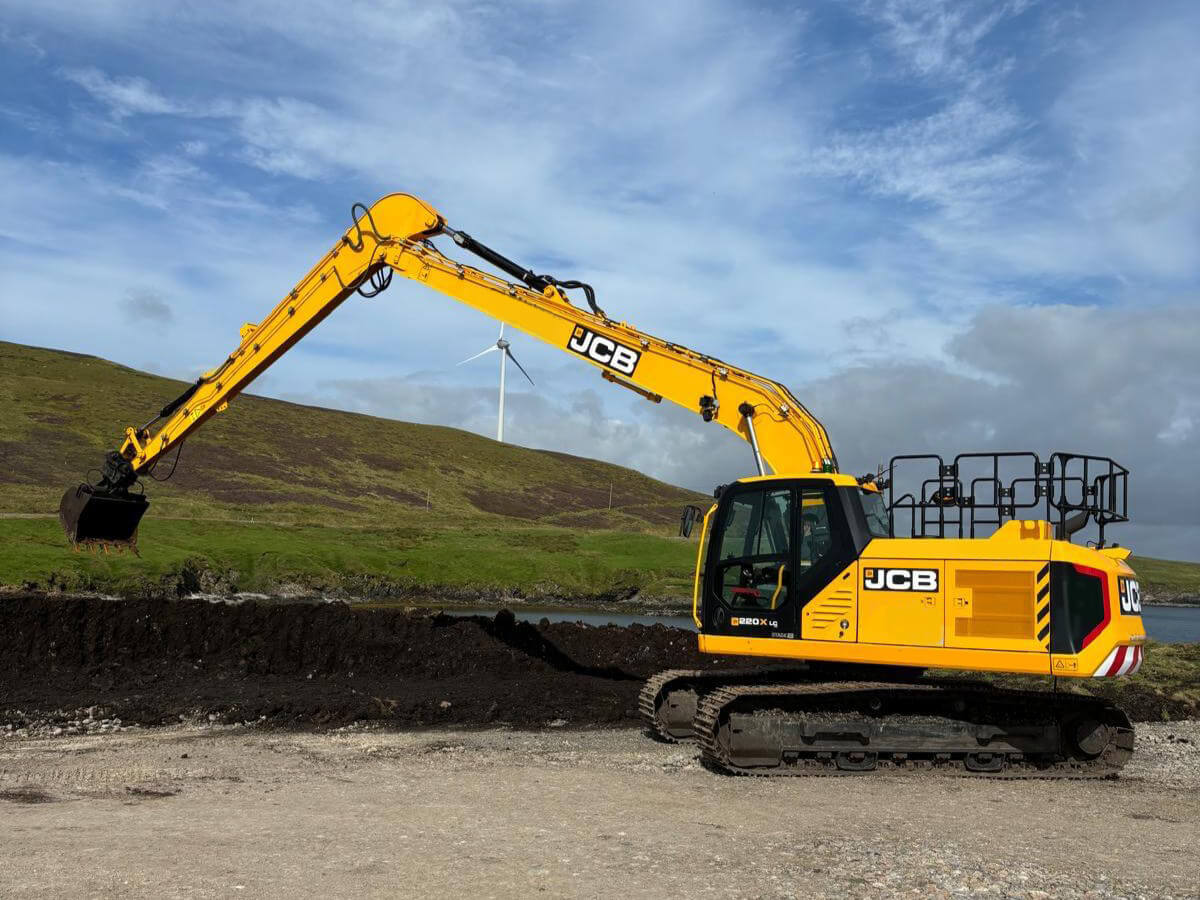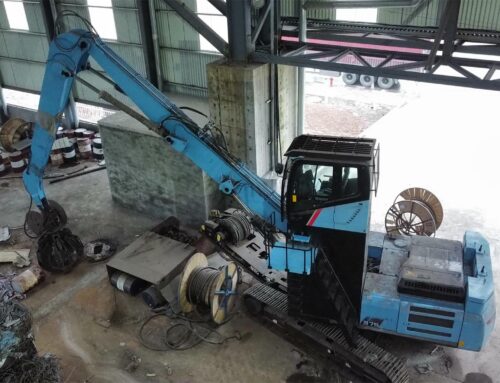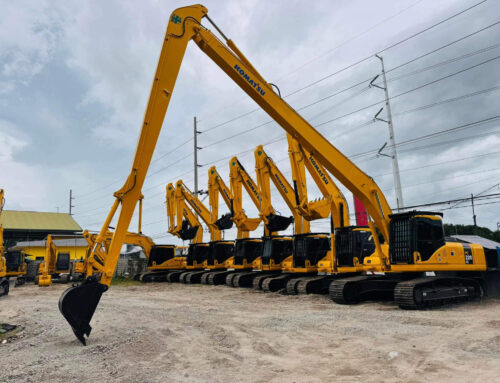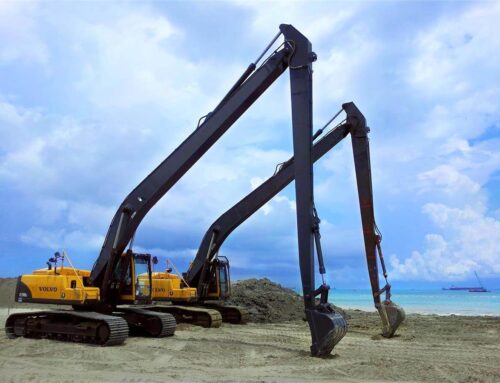An long front boom of an excavator plays a vital role in its performance, especially in heavy-duty applications such as deep digging, demolition, and material handling. The boom must be strong, reliable, and durable to withstand these intense operations. Therefore, ensuring the quality of the long forearm is essential for both the functionality and safety of the machine.
This article will guide you through the equipment, methods, and items required to test the quality of an long front boom of an excavator.
-
Testing Equipment
Before diving into specific tests, it is important to understand the equipment used to evaluate the quality of a long forearm. Each piece of equipment serves a different purpose, whether it is testing structural integrity, material properties, or how the boom performs under different conditions.
1.1. Ultrasonic Flaw Detectors
Ultrasonic flaw detectors are essential for identifying internal cracks, inclusions, or voids within the metal structure of a boom. The equipment penetrates the material using high-frequency sound waves that reflect off any discontinuities. This non-destructive testing (NDT) method is highly accurate and sensitive.
1.2. Magnetic Particle Testing (MPT) Machines
Magnetic particle testing (MPT) is another NDT method that uses a magnetic field to detect surface and near-surface defects in ferromagnetic materials. By applying magnetic particles to the surface, cracks and discontinuities become visible as the particles collect in areas where the magnetic field is interrupted.
1.3. Hydraulic Testers
Hydraulic testers are used to evaluate the ability of a boom to handle the hydraulic pressure applied by the machine during operation. This test ensures that the boom can withstand high pressure loads without deforming or failing.
1.4. Digital Calipers and Micrometers
Precision measuring tools such as digital calipers and micrometers are used to measure the precise dimensions of a boom, including wall thickness and alignment. These tools help ensure that the boom meets design specifications.
1.5. Durometers
Durometers are used to evaluate the surface hardness of the boom material, which is essential to understanding how well it will resist wear and abrasion during operation. The harder the material, the better it will perform under pressure.
-
Testing Methods
Different methods are used to evaluate the quality of an excavator long front boom. These methods not only provide insight into material properties, but also detect defects that could affect the boom’s performance.
2.1. Visual Inspection
Visual inspection is the first step in assessing the quality of a long front boom. This method involves checking for obvious signs of wear, cracks, corrosion or deformation. While this method is simple, it is an effective way to detect obvious issues that could lead to more serious problems later.
Procedure:
– Inspect the boom for any visible cracks or dents.
– Look for signs of corrosion, especially at welded joints or high stress areas.
– Check for any signs of misalignment, which could indicate structural weakness or deformation.
2.2. Ultrasonic Testing (UT)
Ultrasonic testing is a widely used method for detecting internal defects that are invisible to the naked eye. An ultrasonic flaw detector sends high-frequency sound waves through the boom structure. If there are any internal defects, such as cracks or inclusions, these waves will reflect back to the equipment, highlighting areas that need attention.
Procedure:
– Place the ultrasonic probe on the boom surface.
– Scan the entire boom, especially high stress areas and around welds.
– Analyze reflected waves to detect internal flaws or inclusions.
2.3. Magnetic Particle Testing (MPT)
Magnetic particle testing (MPT) is an effective method for detecting surface and near-surface cracks in ferromagnetic materials. By applying a magnetic field and sprinkling ferrous particles on the surface, any discontinuities can be observed as the particles accumulate in these areas.
Procedure:
– Apply a magnetic field to the boom.
– Cover the surface with magnetic particles.
– Use ultraviolet light to observe particle accumulation in areas where cracks exist.
2.4. Hydraulic Load Testing
Hydraulic load testing involves applying a hydraulic load to the boom of an excavator to simulate real-world working conditions. This test ensures that the boom can withstand the forces applied during digging, lifting and other operations. It is important to monitor for any signs of stress or deformation under load.
Procedure:
– Attach a hydraulic tester to the boom.
– Apply pressure gradually to simulate the loads the boom will experience in the field.
– Monitor for signs of bending, warping or failure under pressure.
2.5. Dimensional Measurements
Dimensional measurements using a digital caliper or micrometer ensure that the boom meets the exact specifications outlined in its design. Deviations in thickness or alignment can affect the strength and efficiency of the boom.
Procedure:
– Measure the thickness of the boom wall at several points.
– Check the alignment of the boom to ensure there is no warping.
– Compare the measurements to the manufacturer’s specifications.
2.6. Hardness Testing
Hardness testing determines the boom material’s resistance to deformation. The harder the material, the more it resists wear, which increases the life of the boom.
Procedure:
– Use a hardness tester to take readings at multiple points on the boom.
– Compare the readings to the acceptable hardness range for the material.
– Ensure that the material hardness is consistent throughout the boom.
-
Test Items
When evaluating the quality of a long front boom of an excavator, there are several key items to evaluate. These include material integrity, weld quality, structural alignment, and resistance to stress and wear.
3.1. Material Integrity
Ensuring the integrity of the material used in the boom is critical. Any defects in the material, such as inclusions, cracks, or improper hardening, can lead to premature failure. Ultrasonic testing and magnetic particle testing can both be used to assess material integrity.
3.2. Weld Quality
The weld is often the weakest link in the boom. A thorough inspection of the weld, including visual inspection, ultrasonic or magnetic testing, is essential to prevent future failures.
3.3. Structural Alignment
The structural alignment of the boom is critical to proper operation. Any misalignment can lead to poor performance or even failure under load. Accurate measurements are essential to ensure that the boom is straight and accurate.
3.4. Stress Resistance
The ability of the boom to withstand stress during operation is a key factor in its overall quality. Hydraulic load testing allows for simulation of working conditions to assess how the boom reacts to stress.
3.5. Surface Hardness
The hardness of the boom surface affects its wear resistance. Higher hardness grades ensure that the boom can handle abrasive conditions without excessive wear.
Conclusion
The long front boom of an excavator is subject to extreme forces during operation, so its quality must be ensured through rigorous testing. Using advanced inspection equipment such as ultrasonic flaw detectors, magnetic particle flaw detectors and hydraulic testing machines, combined with comprehensive visual inspection and dimensional measurements, the integrity of the boom can be fully evaluated. By focusing on material integrity, weld quality, structural alignment, stress resistance and surface hardness, operators can have confidence in the durability and performance of the boom, ensuring the safe and efficient operation of the excavator.
In summary, ensuring the quality of the long front boom of an excavator through the outlined test methods and equipment is a key part of maintaining the overall safety and efficiency of the excavator. Each test method, whether it is a visual inspection or more advanced non-destructive testing technology, plays an important role in identifying potential problems that may compromise the structural integrity of the boom.
Proper testing of material integrity ensures that the boom is free of internal and surface defects such as cracks or inclusions. Similarly, checking weld quality is also important, as poorly executed welds can become weak points under stress. Assessing structural alignment ensures that the boom remains properly aligned during operation, minimizing the risk of unexpected deformation or failure. In addition, hydraulic load testing simulates real operating conditions, verifying that the boom can withstand the hydraulic pressure and loads in the field. Finally, surface hardness testing ensures that the boom surface will resist wear over time, thereby extending the service life of the component.







Leave A Comment